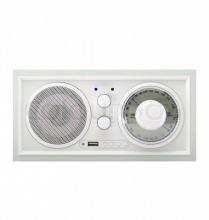WHITE COMMUNICATIONS
WHITE COMMUNICATIONS - Cognitive radio and TV white spaces: a novel framework for combined localization and communication

The term white spaces refers to licensed frequencies for broadcasting services that are not used in specific geographical areas. Regulatory framework for secondary utilization of TV white spaces (TVWS) in the UHF band is well underway in both the United States and the United Kingdom, while important steps in this direction are being taken within the European Union and elsewhere. TVWS is a significant new opportunity for operators to provide a range of improved and new wireless services.
Thanks to the favourable propagation characteristics of UHF frequencies, the transmission range of a White Space Device (WSD) is greater than that of a classic WiFi; This may allow total coverage for internet access in urban areas or internet access in rural areas, and, in particular, a WSD may be able to reach a large number of White Spaces Access Points (WSAP). This property may be very important for positioning. As a matter of fact, we propose to investigate and develop theoretical models for the positioning error and accuracy, as a function of reached access points and anchor nodes in use in the positioning algorithms.
We then propose to analyze WiFi at TV bands for home networking. Preliminary investigations show that WSD performance in terms of bit rate with a single available TV channel may become comparable to that of WiFi at 5GHz at 14 meters and above, and to that of WiFi at 2.4GHz at 20 meters and above. However, and more important, thanks to the improved propagation characteristics of lower frequencies TVWS band may provide good indoor bit rate at a lower energy compared to WiFi; a 17 dB energy saving may be achieved. Improved bit rate may be reached by spectrum aggregation that may allow using extra available TV channels; as a matter or fact channel bandwidth becomes a system bottleneck and if one combines, say, three channels one triples the effective data rate without substantial loss in range with only 3 dBm, that is very low power levels.




